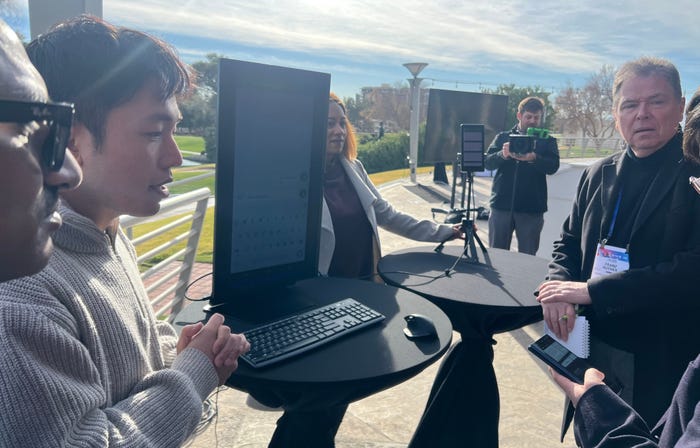Mark43, Polaris Wireless partner to deliver first-responder 3D location information to CAD systemMark43, Polaris Wireless partner to deliver first-responder 3D location information to CAD system

Polaris Wireless has announced plans to have its three-dimensional (3D) location technology integrated into the 911 computer-aided-dispatch (CAD) system from new partner Mark43 to help monitor the location of firefighters and other public-safety personnel, particularly when responding to an incident inside a multi-story building.
Public safety has long utilized GPS technology to track the XY location of personnel and vehicles at a response scene, but GPS is of limited use when a responder is inside of a building, because the structure often blocks the satellites’ signals from connecting directly to the user’s device. In addition, GPS does not provide any information about the elevation of the user, which can be troublesome in a multi-story building.
Having a solution that can provide Z-axis location is extremely important, given the proliferation of tall buildings in urban areas—including 488 skyscrapers in the five largest cities in the U.S., according to Matthew Polega, Mark43’s co-founder and vice president of operations.
“Obviously, there’s a ton of police activity that people are responding to in those different skyscrapers, and that doesn’t even includes buildings that are 20 stories, 30 stories, multilevel homes or things like that,” Polega said during an interview with IWCE’s Urgent Communications. “For us to be able to give dispatchers, call-takers and command staff the Z-level orientation and coordinates of where their really valuable first responders are is huge.
“So, this was a natural way for us to answer the question: ‘What additionally can you do to increase first-responder safety out in the field?’”
Partnering with Polaris Wireless lets Mark43 address a notable void in the company’s CAD offering which is a cloud-based service that can be utilized in both mobile environments and in a traditional 911 center, Polega said. “We had this big, gaping issue when an officer went into a high rise, skyscraper or anything that requires some sort of elevation,” Polega said. “That’s when we said, ‘Let’s look for potential partners.’
“We’ve been very much in the mode of, ‘How can we build this ecosystem of partners to give our customers the best experience?’ Mark43 can’t build every single thing, but we can bring a bunch of companies and entities together to make sure that we offer that complete solution. Polaris [Wireless] was the obvious fit.”
Karl Kessenich, executive director of business development for Polaris Wireless, said previous versions of the company’s solution have been focused on providing horizontal and vertical—or Z-axis—location information to carrier customers for 911 purposes. Polaris Wireless continues to await an FCC order formalizing carriers’ 911 Z-axis location requirements, but it has developed a cloud-based, over-the-top application version of its technology that allows the company to pursue other partnerships, such as the one with Mark43, he said.
“Our technology is available today, so we have created this over-the-top capability,” Kessenich said during an interview with IWCE’s Urgent Communications. “In the meantime, we’re trying to bring this solution to first responders through partnerships It allows us to focus on our core expertise, and it allows our partners to integrate and implement high-accuracy 3D location where their users would benefit from it.
“I’ve had my sights set on Mark43 for several years now. But it wasn’t until we came out with this carrier-independent, over-the-top capability that we really had something that we could provide directly to companies like Mark43. Prior to that, we were only really available through carrier networks.”
Polaris Wireless leverages information from the variety of sensors on a smart device such as barometers and accelerometers to help determine the indoor location of a device, whether the user is a first responder or a 911 caller, Kessenich said. But the Polaris Wireless solution is not limited to sensor information from the device, he said.
“It’s not just one technology or a couple of technologies; it’s anything that’s available,” Kessenich said. “We already have the ability to do 3D Wi-Fi positioning vertically—it’s just a function of the availability and maturity of a 3D Wi-Fi database.
“We’re also starting to research and develop some capabilities around the inertial navigation. We can expand on our single-point location and tracking using the inertial sensors and devices. So, we have multiple technologies, and our algorithms decide which measurements are most valuable.”
Leveraging location information from Wi-Fi systems and low-energy Bluetooth beacons can help Polaris Wireless deliver highly accurate location information for most law-enforcement and EMS incidents, Kessenich said. However, accurate location of firefighters typically is much more difficult, because the changes in the environment can be significant during a fire response, he said.
“If they go into a significantly burning building, they may pressurize stairwells to contain the fire, which creates very steep gradients, from a pressure standpoint, and they’ll cut power, so any local Wi-Fi in that building is gone,” Kessenich said.
“That’s why we’re evolving our technology to serve more fire use cases, which are the more challenging ones. That’s where we’re getting into the device and more localized solutions … There are ways to mitigate those challenges, and that’s next in our development.”
Kessenich and Polega said public-safety entities can take advantage of the Mark43-Polaris Wireless partnership immediately and that the companies are looking for agencies that are interested in trialing the technology.





